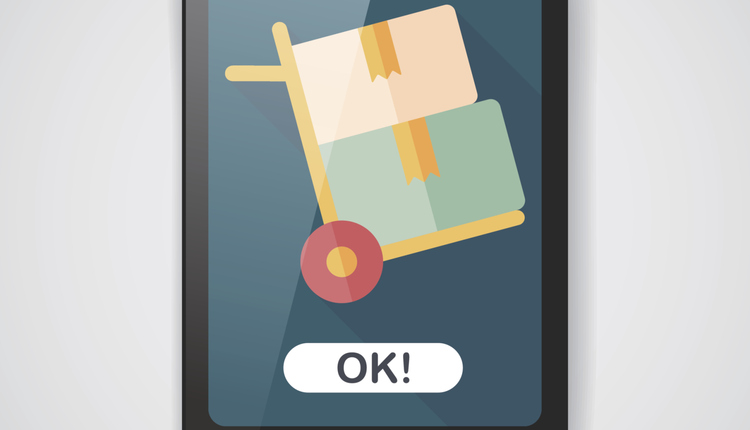Few marketing channels see response rates as positive as those seen by direct mail. Whereas you might be happy with a three percent response rate from your email campaign, it's not unusual to see a response rate of 30% or more from a direct mail campaign. 1 to 1 marketing (also referred to as 1:1 marketing) is still characterized by direct mailing efforts, by companies large and small alike.
It's not surprising that 1 to 1 marketing would go hand in hand with direct mail. Direct mail done "right" is all about personalized marketing. Direct mail pieces are sent to a geographical area, or to specific recipients based on particulars ranging from income, age range, household type and so on. Unlike a billboard that hopes to be seen by anyone who just happens to be going by it, the direct mail piece is sent directly to a person or persons in a household in order to get a message across, to make a specific call to action: "Do A' and you will get B.'"
1 to 1 marketing typically uses four steps in its implementation: 1 - identification of the customers by collecting in-depth data and using this data to determine how to fill the customers' needs and how to appeal to prospects; 2 - differentiation in which the customers are segmented according to personal needs and priorities; 3 - interaction in which it is determined what ways the customer likes to communicate and what ways are best to use; 4 - customization in which the business figures out how to personalize the product or service to provide exactly what the customer wants.
Direct mail figures precisely into the four parameters of 1 to 1 marketing. In order to effectively utilize direct mail pieces, there must be identification and differentiation of the target audience. A single message will be hard pressed to make the same impression on a large audience that may straddle different economic issues, age ranges and so on. So the interaction and customization of the direct mail pieces is key to an effective direct mail campaign.
Another benefit to direct mail is that it provides a tactile "touch" in your multi-touch marketing strategy. You can send email after email and hope to capture the attention of your audience. But add some direct mail pieces into the mix and you've upped the ante. You have added in a redundancy that is a positive aspect to your overall contact with your customers and prospects. You can give them a heads up via email that the direct mail piece will arrive any day. They receive the direct mail piece. And you can follow up with email to remind them of the direct mail piece they just received and of the call to action.
In early 2012, the Target Marketing 6th Annual Media Usage Forecast indicated that direct mail clearly delivered the strongest ROI for B2C acquisition of customers (approximately 34% for direct mail compared to 25% for email), as well as for contact and retention of customers (37% for direct mail compared to 31% for email). The 2012 Response Rate Report from the Direct Marketing Association, however, indicates that ROI on email is higher. Yet direct mail gets a far better response rate. In essence, when 1000 people are contacted via email and direct mail, 34 of those people will respond to the direct mail piece and only 1 person will respond to the email.
It's not surprising that 1 to 1 marketing would go hand in hand with direct mail. Direct mail done "right" is all about personalized marketing. Direct mail pieces are sent to a geographical area, or to specific recipients based on particulars ranging from income, age range, household type and so on. Unlike a billboard that hopes to be seen by anyone who just happens to be going by it, the direct mail piece is sent directly to a person or persons in a household in order to get a message across, to make a specific call to action: "Do A' and you will get B.'"
1 to 1 marketing typically uses four steps in its implementation: 1 - identification of the customers by collecting in-depth data and using this data to determine how to fill the customers' needs and how to appeal to prospects; 2 - differentiation in which the customers are segmented according to personal needs and priorities; 3 - interaction in which it is determined what ways the customer likes to communicate and what ways are best to use; 4 - customization in which the business figures out how to personalize the product or service to provide exactly what the customer wants.
Direct mail figures precisely into the four parameters of 1 to 1 marketing. In order to effectively utilize direct mail pieces, there must be identification and differentiation of the target audience. A single message will be hard pressed to make the same impression on a large audience that may straddle different economic issues, age ranges and so on. So the interaction and customization of the direct mail pieces is key to an effective direct mail campaign.
Another benefit to direct mail is that it provides a tactile "touch" in your multi-touch marketing strategy. You can send email after email and hope to capture the attention of your audience. But add some direct mail pieces into the mix and you've upped the ante. You have added in a redundancy that is a positive aspect to your overall contact with your customers and prospects. You can give them a heads up via email that the direct mail piece will arrive any day. They receive the direct mail piece. And you can follow up with email to remind them of the direct mail piece they just received and of the call to action.
In early 2012, the Target Marketing 6th Annual Media Usage Forecast indicated that direct mail clearly delivered the strongest ROI for B2C acquisition of customers (approximately 34% for direct mail compared to 25% for email), as well as for contact and retention of customers (37% for direct mail compared to 31% for email). The 2012 Response Rate Report from the Direct Marketing Association, however, indicates that ROI on email is higher. Yet direct mail gets a far better response rate. In essence, when 1000 people are contacted via email and direct mail, 34 of those people will respond to the direct mail piece and only 1 person will respond to the email.
Marketers can certainly use these numbers to determine how they should approach direct mail and integrate it properly with 1 to 1 marketing strategies in order to maximize both the response rates and the ROI. By sticking with the tenets of 1 to 1 marketing and applying it appropriately to a direct mail campaign, marketers can achieve great results.
About John Foley, Jr.
John Foley is the founder of Grow Socially, an online marketing company including Social Media. They provide marketing consulting and delivery services. Created in 2010, Grow Socially, Inc (www.GrowSocially.com) helps companies with their online marketing efforts, with a focus on social media. These services include discussing and creating marketing plans, strategies, tactics, and goals that align with your company's needs.
About John Foley, Jr.
John Foley is the founder of Grow Socially, an online marketing company including Social Media. They provide marketing consulting and delivery services. Created in 2010, Grow Socially, Inc (www.GrowSocially.com) helps companies with their online marketing efforts, with a focus on social media. These services include discussing and creating marketing plans, strategies, tactics, and goals that align with your company's needs.
In addition to his role at Grow Socially, Mr. Foley serves a CEO for interlinkONE, an integrated multi-channel marketing web solutions company serving the print and fulfillment industries and marketing departments. Contact him at 978.674.8081 or johnf@growsocially.com.












